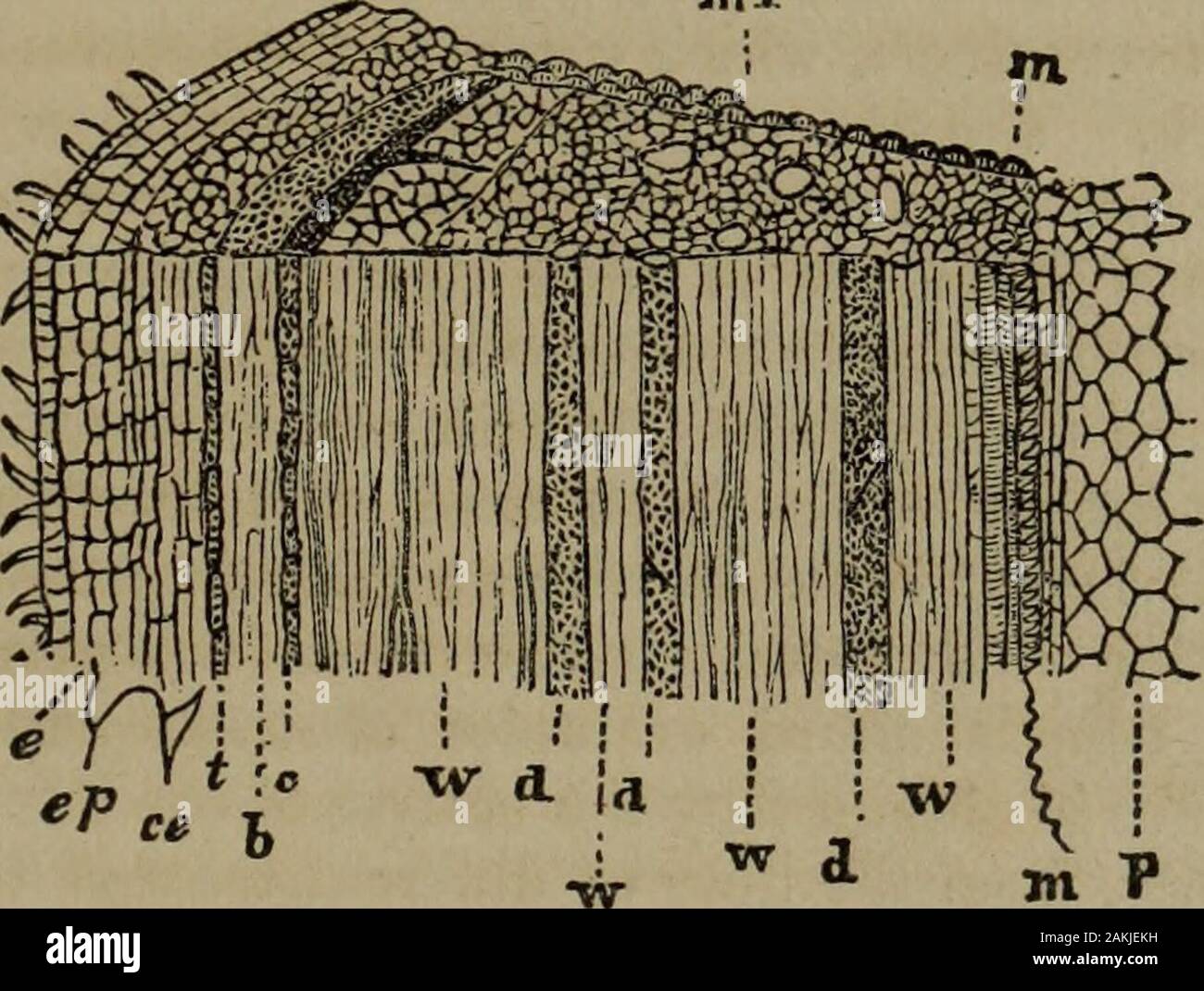Botany of the Southern states . g it witha microscope, the student will find that they are placed on theexternal layer of the bark, between it and the epidermis, andthat it has no connection with the bark, much less with the wood. 40. Describe glandular hairs.—41. What are stings?—42. What areprickles?—43. What is scurf?—44. What are lenticels ? THE BARK. 25 Section 2.— The Bark. 45. The bark lies immediately beneath the epidermis. Itconsists of several layers. In the early state it is entirely cel-lular, and is exactly like the pith with which it is in contact;but by the production of vessels

Image details
Contributor:
The Reading Room / Alamy Stock PhotoImage ID:
2AKJEKHFile size:
7.1 MB (383.2 KB Compressed download)Releases:
Model - no | Property - noDo I need a release?Dimensions:
1820 x 1373 px | 30.8 x 23.2 cm | 12.1 x 9.2 inches | 150dpiMore information:
This image is a public domain image, which means either that copyright has expired in the image or the copyright holder has waived their copyright. Alamy charges you a fee for access to the high resolution copy of the image.
This image could have imperfections as it’s either historical or reportage.
Botany of the Southern states . g it witha microscope, the student will find that they are placed on theexternal layer of the bark, between it and the epidermis, andthat it has no connection with the bark, much less with the wood. 40. Describe glandular hairs.—41. What are stings?—42. What areprickles?—43. What is scurf?—44. What are lenticels ? THE BARK. 25 Section 2.— The Bark. 45. The bark lies immediately beneath the epidermis. Itconsists of several layers. In the early state it is entirely cel-lular, and is exactly like the pith with which it is in contact;but by the production of vessels and woody fiber, they are sepa-rated and become very different in appearance and constitution.The bark consists of two portions, the cellular and vascular, the latter of which is called liber, and is the inner portion ofthe bark. The cellular portion is usually divided into two por-tions. The outer portion is called the suberose or corky layer, or Epiphlceum, Fig. 22 ep. It is composed of cubical or flat- Fig. 22. mi». p—the pith ; m—medullary sheath ; xo w to—woody fiber;dad—dotted ducts ; c—carabrim ; 6—liber ; ce—mesophlce-um ; ep—epiphlceum; e—epidermis ; mr—medullary rays. tened cells, having no coloring matter within them, but turningbrown by age. It is sometimes composed of a single layer ofcells, at others it is produced in great quantities, as in the Cork-tree. The form of the cells makes it easy to distinguish it fromthe subjacent layer. The inner cellular layer of the bark is called the mesophl&eum, Fig. 22 c e. It consists of prismatic cells, usually inclosing thegreen coloring matter that gives color to the young stem. Itlies looser than the suberose layer, and is largely developed inthe coniferce. The lactiferous tissue is found beneath this layer. 46. The epidermis, cellular integument, and liber, may be 45. Of what does the bark consist? Into how many portions is the cel-lular divided ? Describe the suberose layer. What is the inner